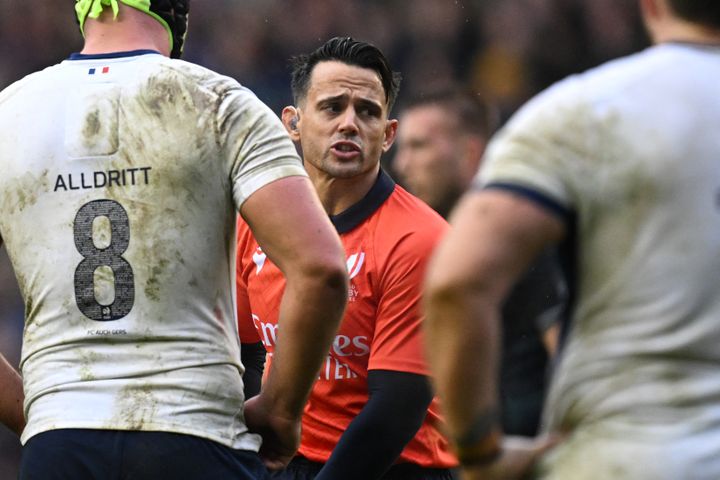For the first time in history, all players in the Six Nations Tournament are playing with a jersey bearing their name. A situation that has long been rare in rugby, but which is tending to become more democratic.
Published
Reading time: 4 min
These letters above the numbers undoubtedly caught the eye of rugby fans at the stadium and in front of their screens. Since the start of the Six Nations Tournament, the teams involved have worn jerseys with the name of each player on the back, a first in the history of the competition. Among supporters, this innovation aroused numerous reactions and opened debates on the evolution and development of the discipline, between progressivism and conservatism.
If the subject of flocking jerseys attracts so much attention, it is because rugby operated for a very long time without displaying the names of its players. The reason most often given is a question of values and culture specific to this sport. “In a very ideological way, in rugby, the jersey belongs to a team, to a club, and not to a single individual. It’s a very strong idea to remember”, explains Joris Vincent, sports historian. A team sport par excellence, rugby advocates the collective before individuals.
“The jersey doesn’t belong to anyone”
In this logic, each player who wears a jersey only borrows it, without monopolizing it. “The national team jersey does not belong to anyone, by name”, estimates Dimitri Yachvili, former French international, who wore the blue jersey (without flocking) 61 times. But behind the weight of tradition, other logistical and economic reasons could also explain the absence of flocking. Unlike other team sports such as football or basketball, where players (almost) always wear the same jersey defined in advance, in rugby, the number depends on the position of the starting player.

With a lot of changes during and between each encounter, the number-name combinations are multiplied. “Clubs do not have countless sets of shirts at their disposal and, as there is a large turnover players in a team, it is difficult to have a jersey set that takes into account both the number and the name of the player”asks Joris Vincent.
“In rugby, the reuse of jerseys from one match to another is more democratized than in football, this notably makes it possible to reduce costs and limit flocking problems”, agrees Nicolas Jouvenne, sponsorship manager at Kappa, equipment supplier to UBB and Stade Français. “Rugby clubs therefore generally use fewer professional jerseys than in football, even if this may change depending on the signing of sponsorship contracts with the equipment manufacturer and its other jersey sponsors.” Enough to limit the specter of flocking of jerseys for a long time to isolated initiatives of certain selections, like Wales in 2008.
Opening rugby to another audience
At the start of 2024, the Six Nations Tournament has therefore broken with this tradition by generalizing the printing of the player’s last name just above the number. A decision by the authorities motivated by the desire to continue the development and democratization of rugby, according to the British daily The Daily Telegraph, who first reported the information. The flocking should allow greater identification with the players, from an increasingly large audience, just like the series broadcast by Netflix, Full contactimmersed in the 2023 edition of the Tournament.
“If rugby wants to open up to a wider and less knowledgeable audience, having the names of the players on the back allows this audience to get to know the players better”admitted Jean-Marc Lhermet, vice-president of the French Rugby Federation, to RMC during the World Cup. There english federationwho had tried the experience for the first time during the fall 2022 tour, had justified it by the “potential to bring fans closer to international stars” and of “promote world-class English players”.
“If it’s fun and it can help, you might as well do it. It’s very good to develop rugby, it has to be done intelligently and in good conditions.”
Grégory Alldritt, captain of the XV of Francein a press conference before the France-Ireland match
The third row, who has since injured his thigh, clarified that it was for him “completely equal” whether there are names or not on the jerseys of the XV of France.
But, on a larger scale, the feeling is not necessarily shared by all players. “I prefer the impersonal side of the numbers, so that individualities are not emphasized too much in relation to the team”declared Racing 92 player Maxime Baudonne to The Team in November 2022. “It’s current, it’s the image, believes Dimitri Yachvili. On the one hand, I tell myself that this jersey doesn’t belong to anyone. But on the other hand, for eighty minutes, the players are going to wear it.” They now have their name to remember it.

